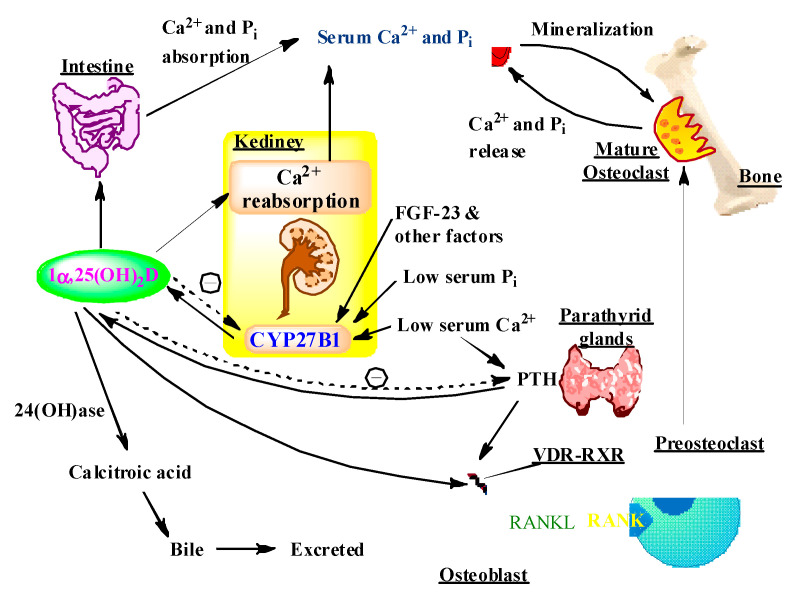Figure 2.
The effects of 1α,25(OH)2D on calcium and phosphorus homeostasis. 1α,25(OH)2D is produced by the kidney under the control of PTH by the parathyroid glands. PTH stimulates its production and 1α,25(OH)2D in turn inhibits the synthesis and secretion of PTH. 1α,25(OH)2D can also decrease its own synthesis through negative feedback. 1α,25(OH)2D enhances intestinal calcium and phosphorus absorption in the small intestine and calcium reabsorption in the kidney. 1α,25(OH)2D regulates bone formation and resorption by stimulation of preosteoblast proliferation and differentiation into osteoblasts. 1α,25(OH)2D also stimulates the expression of RANKL by osteoblasts, which stimulates the differentiation and subsequent activation of preosteoclasts into mature osteoclasts, the bone-forming cells which release calcium (Ca2+) and inorganic phosphorus (Pi) from the bone to maintain calcium and phosphorus levels in the blood. Adequate calcium and phosphorus levels promote the mineralization of the skeleton. 1α,25(OH)2D stimulates the expression of the renal 24-hydroxylase (24-OHase) to catabolize 1α,25(OH)2D to the water-soluble, biologically inactive calcitroic acid, which is excreted in the bile. Other factors, such as serum phosphorus, calcium, and fibroblast growth factor 23 can either increase or decrease the renal production of 1α,25(OH)2D.

